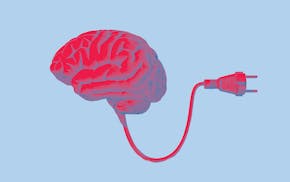Opinion editor's note: Strib Voices publishes a mix of guest commentaries online and in print each day. To contribute, click here.
•••
You know something's wrong when you leave the dentist's office with a sucker. Why are we applying shortsighted solutions to systemic issues? Good intentions aren't enough. It's time to redesign our efforts to reduce homelessness in ways that create lasting, meaningful change.
When I was growing up, my parents moved our family from Chicago's South Side to Minnesota, hoping for a better life. Instead, we found that the resources designed to help us came with impossible conditions. Housing support, for instance, was available only if my mother became a single parent. These policies force families into painful choices: Break apart to qualify for aid, or stay together and struggle without support.
This lived experience shaped my work for systemic change. Today, as executive director of the Center for School Change, a nonprofit that is transitioning to become Catalyst for Systems Change, I advocate for policies that help youths thrive — not just survive. Across Minnesota, young people and families continue to navigate systems that prioritize short-term fixes over cost-effective long-term solutions.
This isn't a fire drill — it's the real thing. Thousands of young people experience homelessness each night. The Minnesota Department of Education reported that over 10,000 children and youths in the state were homeless in October — a number that has been growing over the past few years. But many school officials say two to three times more than that are homeless at some point over the course of the year. In other words, more like 20,000 to 30,000 young people in Minnesota experience homelessness a year.
Addressing youth homelessness isn't just a moral imperative; it's financially prudent. Investing in mental health, housing and cost-effective equitable policies for currently homeless children, youths and families saves every Minnesota taxpayer's money. For example, providing more permanent, deeply affordable housing could save millions of dollars in drug treatment, criminal justice and health care costs.
Recently, 65 young people from suburban, rural and urban areas met at our second annual Changemakers forum at the Minnesota State Capitol. Their top priority? Reducing youth homelessness. Participants shared stories of theft and assault in temporary shelters and advocated for more permanent affordable housing — a more cost-effective solution than shelter-focused approaches.
In the last legislative session, we worked with legislators to secure funding for programs to help young people learn construction skills as they build housing for low-income people and people experiencing homelessness. At our youth forum day, state Rep. Matt Norris praised students for their advocacy, noting such programs are a "win-win" with strong bipartisan support.
Minnesota Housing Commissioner Jennifer Ho agrees. In a statement, she said: "When I travel around the state, I hear the same challenge everywhere: It's hard to attract employees when there isn't enough affordable housing. To tackle this, we need bold and creative solutions, and this program is an incredible step forward."
This month, Minnesota Housing will release a request for proposals, offering up to $100,000 to public schools that create or expand student housing-construction programs. These programs have already seen success in places like St. Paul, where young people helped build six apartments for people who previously experienced homelessness.
At the High School for Recording Arts, a charter school in St. Paul, students who've experienced homelessness are also creating public service announcements to advocate for systemic change. Their goal goes beyond merely discussing the issues. These young people are using their lived experiences to propose legislative solutions based on the realities they've faced.
We're committed to guiding these passionate young leaders through the 2025 legislative session. Their proposed solutions, crafted from lived experiences, address urgent interrelated challenges in housing, mental health and workforce development. We must create cross-sector collaboration rather than working in silos.
Young people are eager to be a part of the solution. Bella Trafton, a Champlin Park High School student, said our youth forum at the Capitol "made me realize that I could actually do something about all the problems I see, and that I have the power to make real change."
Saad Ali of Stillwater's St. Croix Preparatory Academy added, "Speaking to other students opened my eyes to the inequalities around us and directed me toward a path where I can stand up for those who feel unheard."
Together we can build a better future. As the Noah principle reminds us, there will be no more prizes for predicting rain — only for building arks.
Khalique Rogers is executive director of the Minnesota-based Center for School Change, which is transitioning to the Catalyst for Systems Change. He can be reached at khalique@khaliquerogers.com.

Rash: Tariffs and reckless rhetoric repel international tourists from U.S. travel
Counterpoint: Sale of Allete/Minnesota Power is in the public interest
Readers Write: Ukraine "peace plan," trans rights

